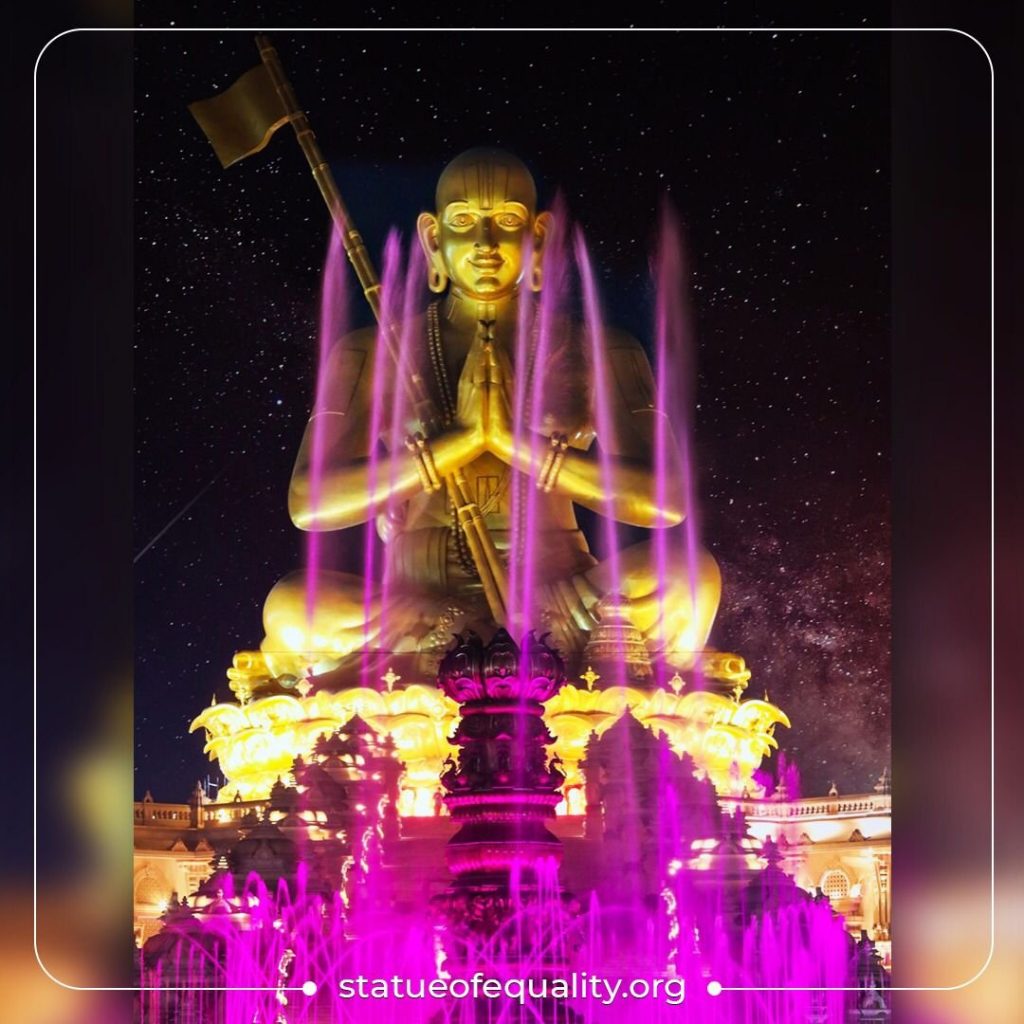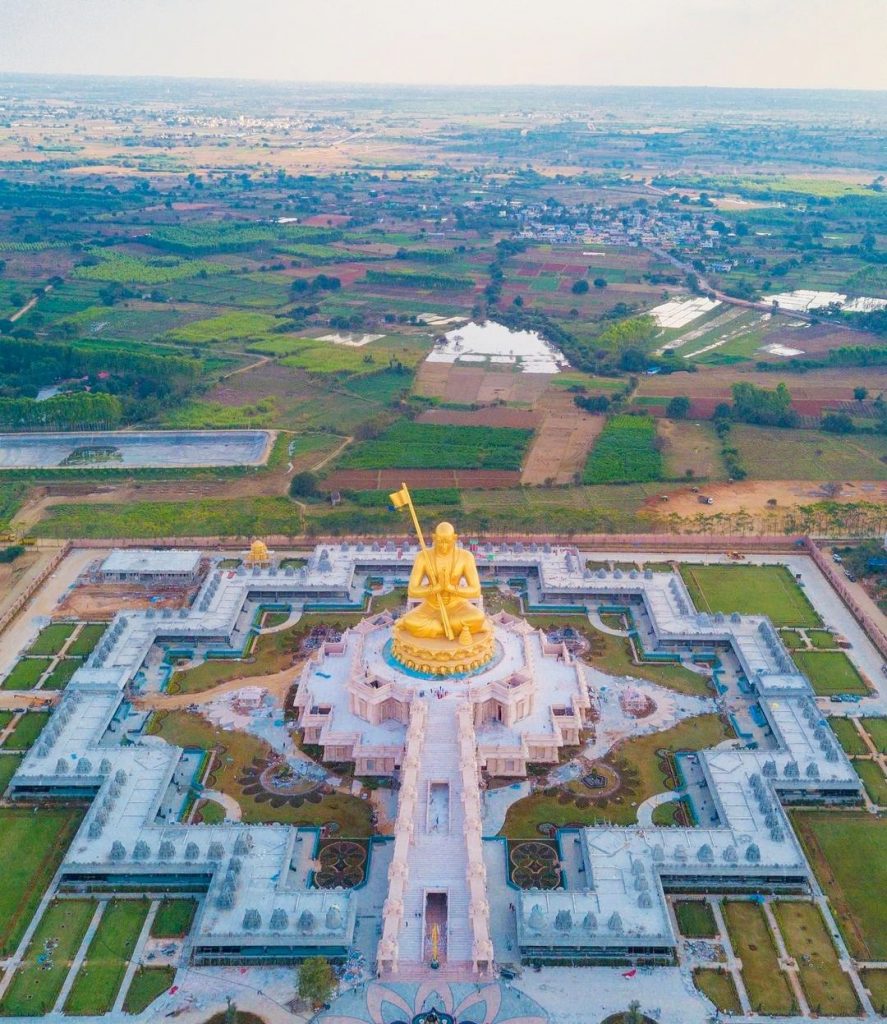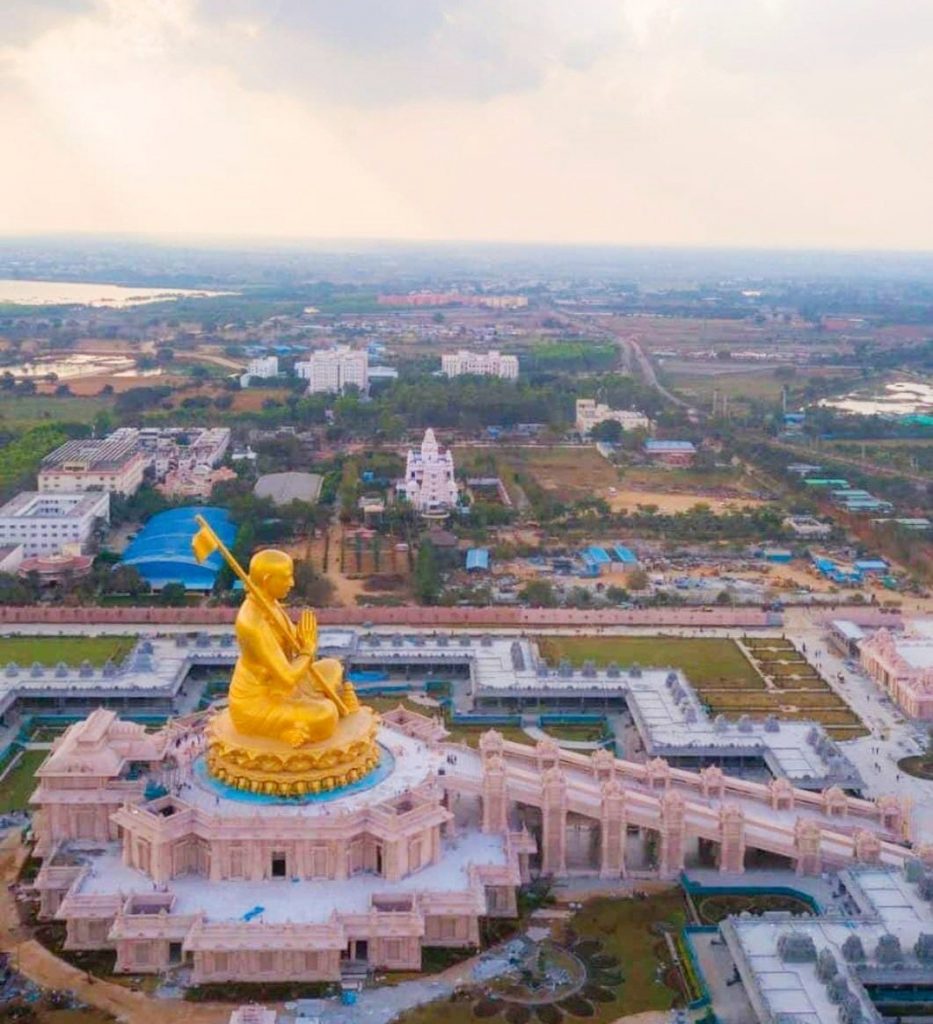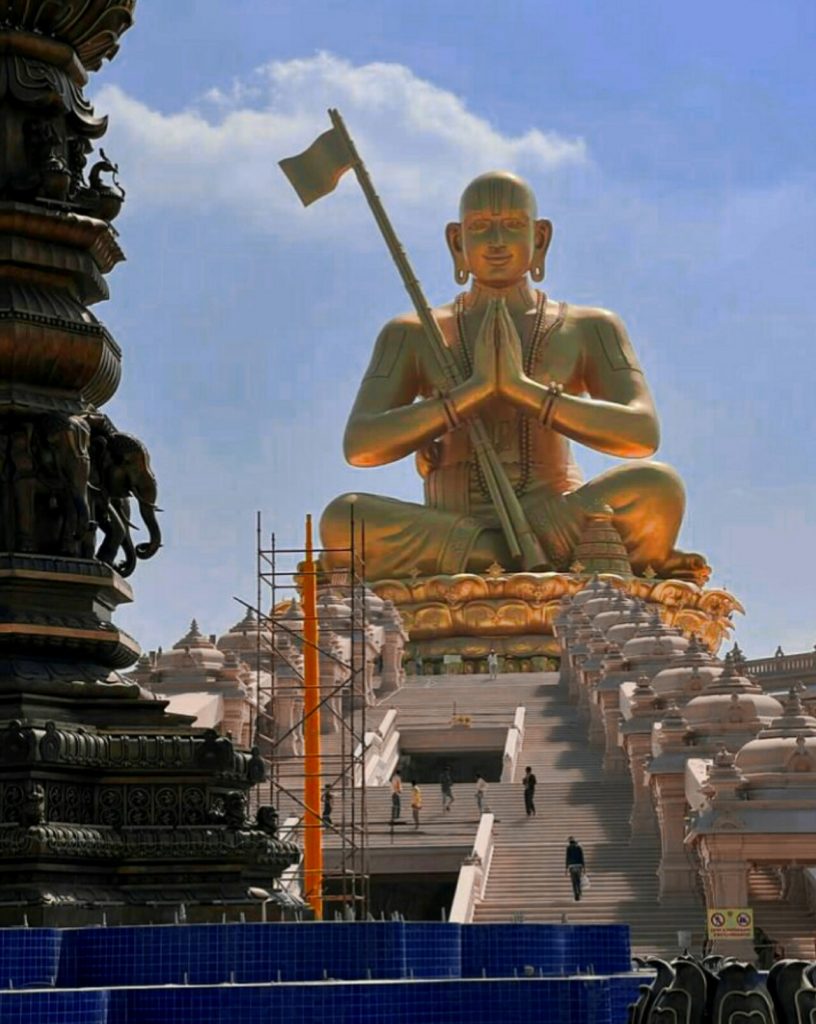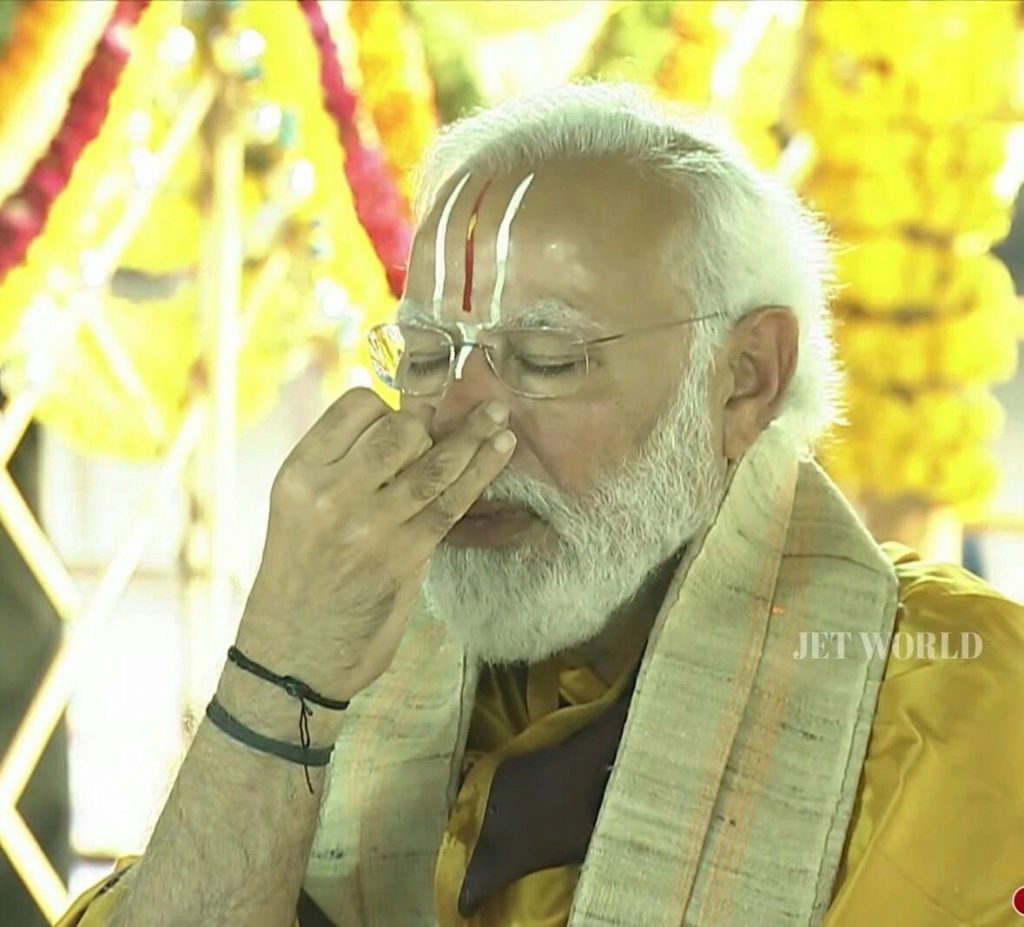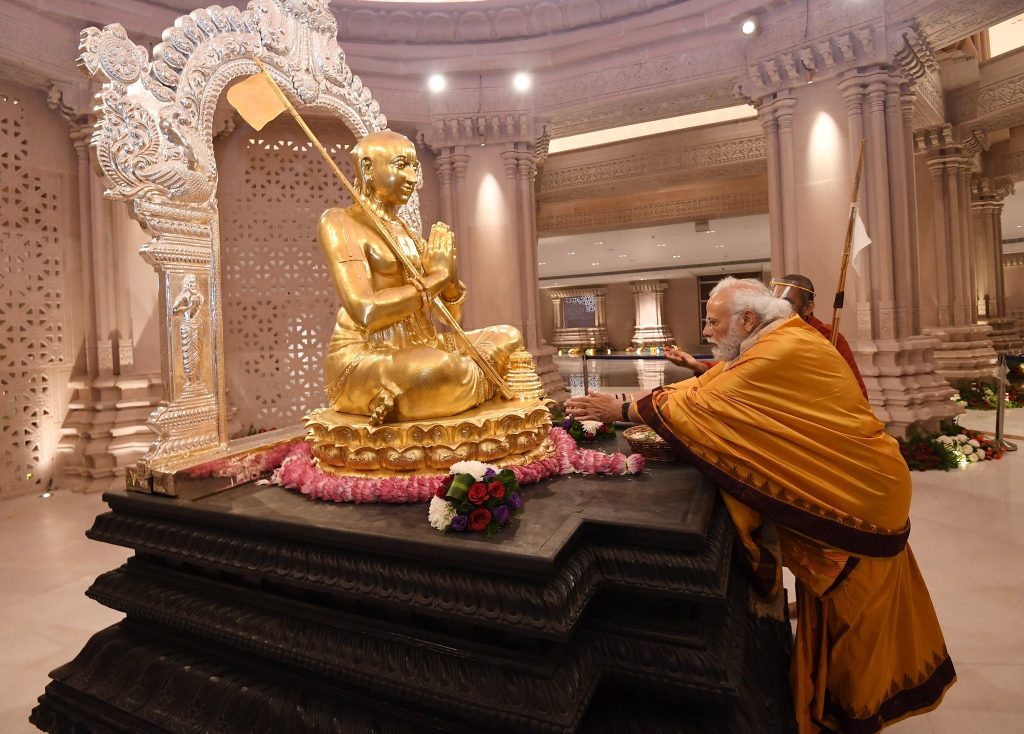Rāmānujācharya was one of the most important exponents of the Sri Vasihnavism Sampradaya within Sanatana Dharma. He was also the proponent of the Viśiṣṭādvaita school of Vedānta. I must confess that I have not read much of his teachings, but I recall something I read a few years back, that I reproduce here:
Whether we take Dvaita, Advaita or Vishishtadvaita, the goal is Paramatma – there is no second thought. Each path defers only in detail, as to how and under what circumstances Paramatma can be reached.
In Advaita, the relationship between the Jivatma and Paramatma is like the relationship between the sides of a square and its perimeter – four times the length of a side, 4a. It is very rational and there is no place for any ambiguity.
In Dvaita the same relationship is described as between the diameter of a circle and its perimeter – Πd. Here the number 22/7, Π is an irrational number. Its value is an approximation only. Even if you go to crores of decimals you can approach very close to the value but not the actual value.
There will remain a minute difference between the values arrived at by the multiplication of Π with Diameter and the exact value of the Perimeter.
Likewise Jivatma can never become Paramatma – it can only approach Paramatma very closely. Just as there simply is no known number of decimals of Π to reach the exact value of the perimeter of a circle so also the no of steps a Jivatma needs to take to reach or become Paramatma will forever remain uncertain. This limitation is described as Taratamyam brought about by Panchaboothatvam.
Thus the relationship between Jivatma and Paramatma remains uncertain and irrational in Dvaita. The beauty is even in Einstein’s relativity theory also this Π is figuring in. He says there is uncertainty in all things in this universe. This is what Madhwacharya’s Panchabeta or un-equableness is about. An insentient object is different from sentient one. Why, there is difference between one sentient object and another too. And sentient beings (Jivatmas) are different from Paramatma.
If Paramatma can be said to be a particular stage of Jivatma like the perimeter of a square is 4a, then the very rational relationship will be limiting the Paramatma. This will then contradict the saying of the Vedas that Paramatma is limitless, Anatha. Therefore Madwacharya’s perimeter= Πd.
What about Vashishtadvaitam of Ramanujacharya? He says Paramatma is a square looking like a circle by Maya, Illusion. He in a way accepts both Dvaita and Advaita.
He says a Jivatma will lose heart if you say you can never attain Paramatma (as in Dvaita) or will become proud if it is said that he is Paramatma (as in Advaita).
So he advocates, like Aristotle’s golden mean, a path in between which says that Paramatma is an uncertain circle as long as you remain ignorant and a clear square when wisdom dawns – like Kuppan, Subban, Kandan, Kannan all different people become a ‘ticket’ to a Conductor when they get into the bus .
Of course, you must know why I took up this topic today. If you don’t, the pictures below may help:)
Also visit https://statueofequality.org.
Wish you a very happy Basant Panchami!

